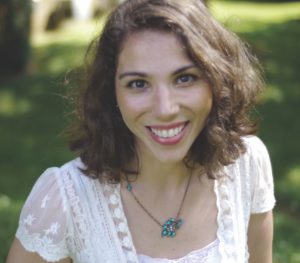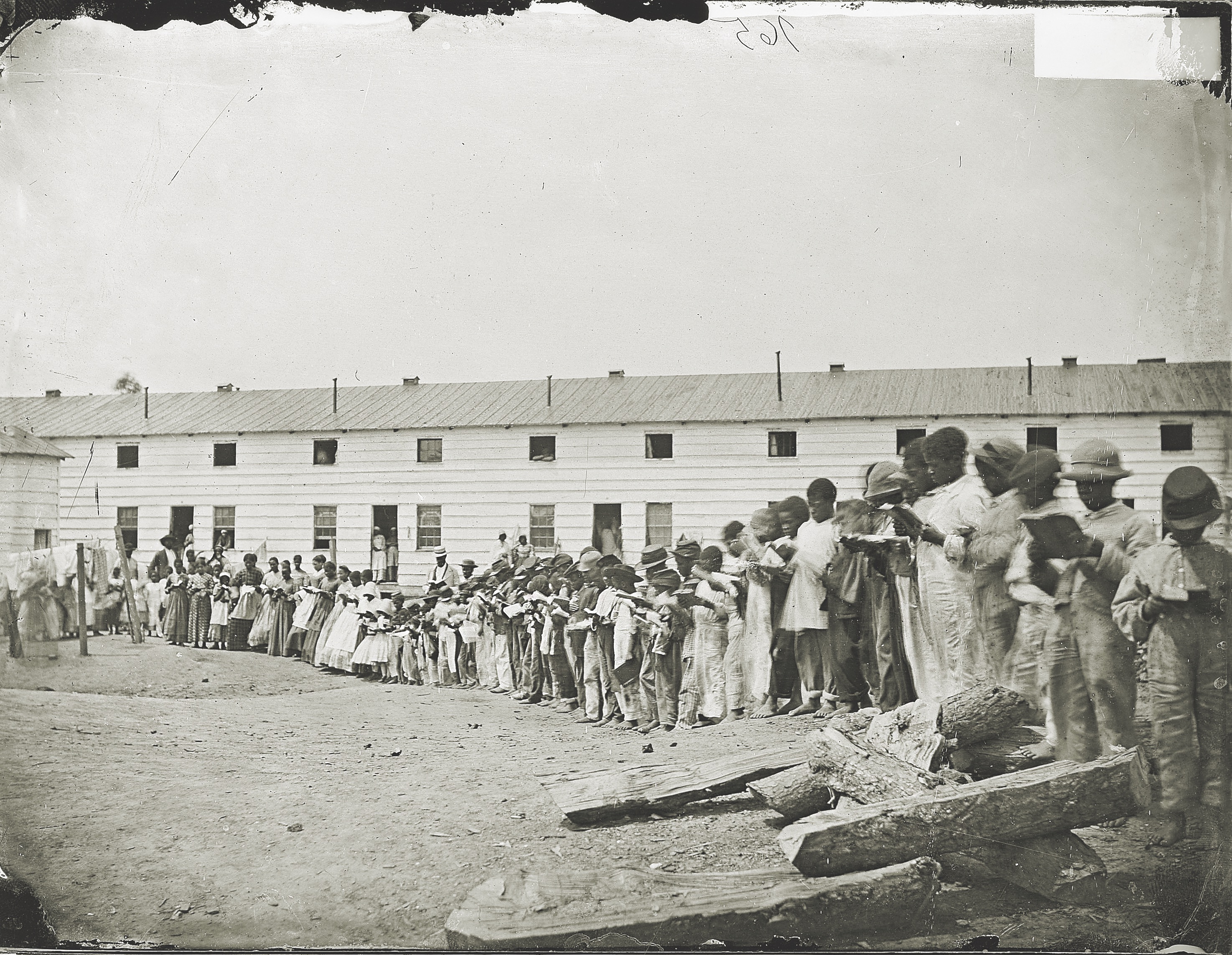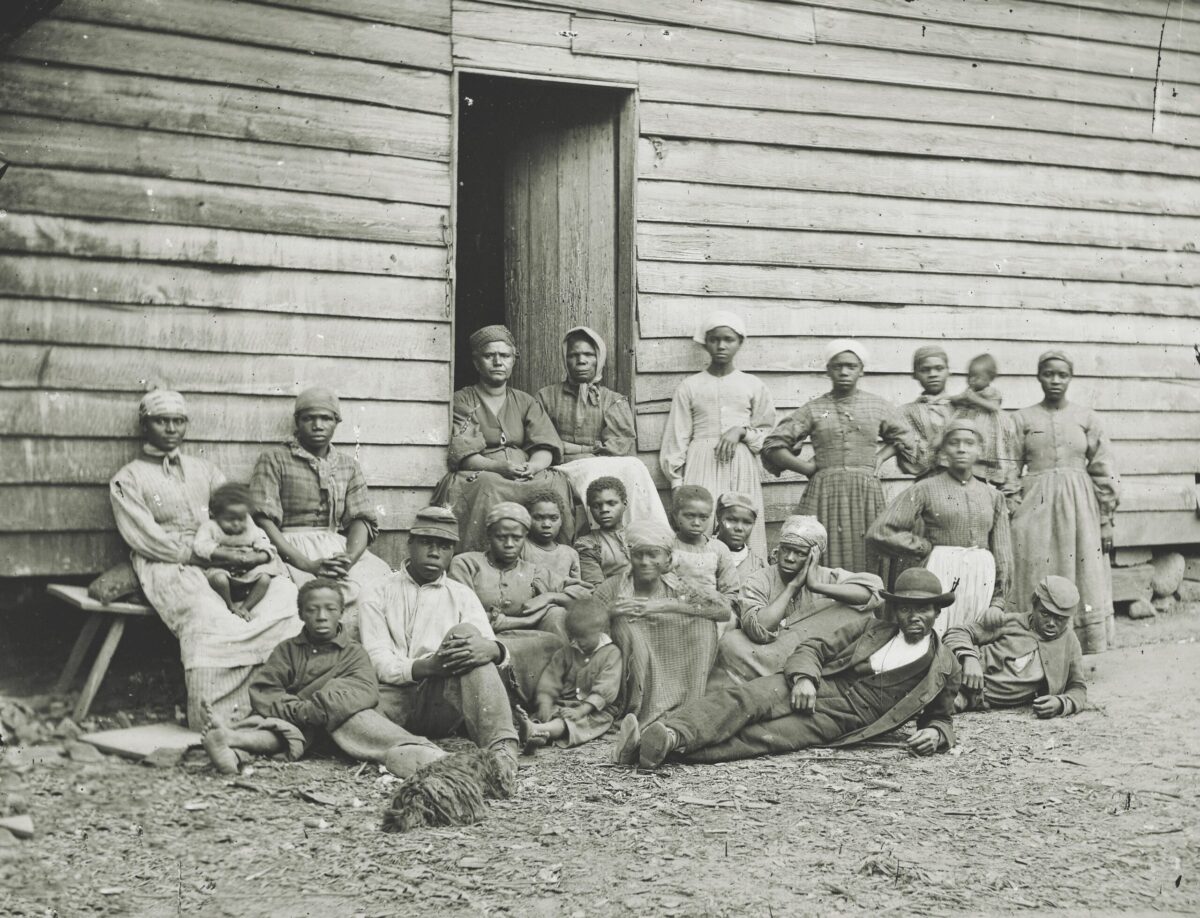
Digging through official war records and narratives of former slaves recorded during the Works Progress Administration, Abigail Cooper, assistant professor of history at Brandeis University, has begun to uncover the powerful culture of faith and community-building forged by freed people in refugee camps during and after the Civil War. Her research will appear in Pierced Dimes and Placenta Fires, forthcoming in 2021. A job directing theater in Port Gibson, Miss., when she was fresh out of college helped her reconceive the way she saw history and who narrated it.
How did you become interested in this topic?
I have an unusual path. I was a theater major, and after I graduated, I went to Port Gibson, Miss., right near Vicksburg, to work as a theater teacher, director, and community programmer. That was a watershed moment: to be taught by this majority-black rural community in the south. It was still in the midst of civil rights battles that according to history were kind of relegated to a Freedom Summer. Their influence on me persists. It changed the course of my graduate study. I did a master’s at Yale Divinity School. I took that cultural orientation and cultural curiosity and parlayed it into a deeper look at deep-seated black culture as a lever for political change.
Why study the freed people’s camps?
Because the Civil War was such a monumental event that has had such an outsized role in memory, it often occludes a whole range of questions. What is getting lost are the very things that make scholars especially uncomfortable. It is not just the black church but what has been termed the slave religion or the cultural practices that has been lambasted as superstition or unassimilable. I’m trying to rescue them from the dustbin of history and say this was not as scary, or as minstrelized a thing as we make it out to be. There were a whole range of cultural practices that were forging relationships between African Americans in camps before they were negotiating what their relationship was going to be with a state that had heretofore been their enslaver. I wanted to find a place where I could do a granular study of that. The camps were an opportune place to do that.
How do you recover the records?
It’s almost bizarre how little the camps were talked about. They were seen as these places of pity, places of scorn. The official records of the camps are often filed at the National Archives under different generals who supervised the contraband camps, as they were first called. You can get the administrative angle there, but the challenge is not to lose sight of African Americans interacting with each other. You get a great overview but then only little short bits, such as a note that the camp residents all seem to be meeting at midnight for their service, even though they have daytime events with chaplains. What is going on at midnight that everyone seems to be participating in? Funerals end up being this extremely important thing because they aren’t denominational. You are now seeing certain rituals and events, even around emancipation itself, that are black-directed. One of the supplements was to look at the WPA interviews from the 1930s, oral histories, newspaper interviews, to flesh out some of the things I’m seeing in the records of the camps but couldn’t explain.
How many camps were there?
Union camps were around 250, but that number expands to nearly 600 when including leased plantations. More come into view when you look beyond Union jurisdiction. As for residents, it is close to one million total, if you just count the movement of people, such as those who were being moved by Confederates to Texas and its outskirts. These places are what the African Americans themselves talk about as slave refugee camps because the owners became unable to take care of them. Displaced African Americans are finding their family members in Texas, and these places become refugee camps even though they are not run by the Union. But in this time, there is a lot of black-initiated organization. It’s fair to say you have a million people in this state of displacement and they are forming networks.
That amounts to one out of four enslaved African Americans being displaced during the war. How did they get by within the camps? How much support was there for the refugees?
It varies. The scholarship is always trying to balance the need, the destitution, the squalor, alongside the actual initiatives. People are building schools, they are building churches. The Historically Black Colleges and Universities that we see today trace their history from freedmen’s camps: Hampton University, Fisk University.
What was the role of the Army?
The Army wasn’t prepared, but paired with the Treasury Department and all of these benevolent organizations, some religious, some secular, Freedmen’s Aid society, the American Missionary Association, the Christian Commission, the Sanitary Commission. A lot of abolitionist organizations are coming to provide some infrastructure and a range of metrics: How many people come to school? How well are they doing, no longer as slaves, but as black laborers? Are you giving them school? Are you giving them rations? It creates paperwork and that in itself is a major transformation. Now people are learning to advocate. At these camps the fact that rape is being recorded is a major shift because before that, a black slave chattel was subject to any manner of sexual exploitation, but now a victim can actually prosecute. There are Union soldiers who are sentenced to five years or dishonorable discharge for rape.
For many reasons it is a difficult history to recover.
These camps have dual identities. On the one hand, they are places of outrage: the government not meeting its own promises. On the other hand, there is a new idea of what the government owes its citizenry, when before that life was under the paternalism of the master. I am trying to stay as close as I can to what it meant for African Americans to change their consciousness into an emancipation consciousness, how they build things, how they also accept that all these new possibilities: literacy, the ability to read the Bible for themselves, to reconnect with family members and to solidify their relationships—but not lose what they’ve already created: this African or Afrocentric culture that has sustained them through slavery. They are trying to preserve these invisible institutions. For example, with all this political chaos that gets talked about, you see so little infighting between African Americans, which should in and of itself be noted. Why there’s an ability for African Americans to have semi-autonomous garden plots and they worked out property arrangements before involving government.

Can you talk about what conscription meant to them?
As the conscription effort takes off, especially after the Emancipation Proclamation, in a lot of places there is ambivalence because the conscription will physically remove them from their families. Just when they have the best legal chance of giving service to Union so the Union will owe them rights that will extend to their families, there was still the need for African American men to negotiate: How are you going to make sure my wife and family are protected? In the latter war years, freedmen’s camps become majority women and children, where children sometimes are 57 percent of the camp. You have a lot of female networks: how do I make wages and have childcare networks? They work out co-ops, but they don’t have as strong a land claim because male landowners are stronger and a more understood entity. You have a lot of black female-led communal habits that end up being the backbone of what the postwar black universe looks like. That’s what I want to show in the camps, as a major support for even the rise of Black Reconstruction, when you see black legislators and black men in power and a lot of times the literacy rates among women in the camps was so high that you see men relying on the women and their organizing power. And you see that success in early Reconstruction efforts. That had a lot to do with networks forged in the freedmen’s camps.
What do you feel is the most misunderstood aspect of this history?
When I say “religion,” I want to signal the legal separation of church and state that allowed African Americans to continue practices that weren’t “political” in relation to the U.S. state, but I also want to rechristen them as absolutely constitutive of the black solidarity that gave them such resilience. When I say religion, I’m not talking about the things you expect. I’m talking about the things that have made scholars extremely uncomfortable and that is why they have excised these particular practices—because they saw them as superstitious and unassimilable to a white citizenry. I’m saying there are a lot of non-Western aspects here, but there was a great creolization going on that made this force distinctive and also forged networks of resilience. Because of the separation of church and state, religion was a great venue for protecting ancestral reverence—believing that your ancestors from Africa are with you—and the church put on a front that was intelligible to mainstream white-dominated networks. Yet they were also sacred places so you could continue networking and keep practices secret because they were behind the veil of religion. The cross has a dual meaning, as the crucifix of Jesus and the Bantu cosmogram, which symbolizes the cyclical nature of life. Those dual meanings reinforced identities as Africans in America and as Americans as they are negotiating this relationship into the citizenry.
It is almost inconceivable to imagine the sense and scale of dislocation.
There is a lot of death and tragedy in these camps, but I am impressed with how refugees made meaning out of this. When you feel dislocated out of a normality, you end up placing significance in different places.
Interview conducted by Senior Editor Sarah Richardson.





